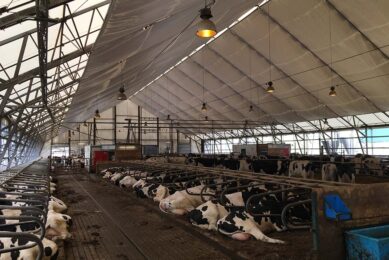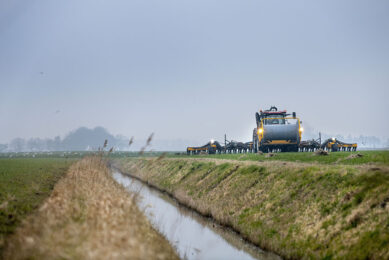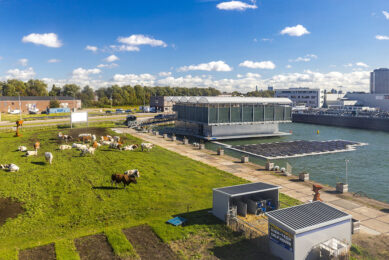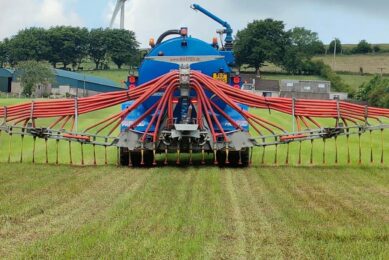Managing the bedding and manure microbiota
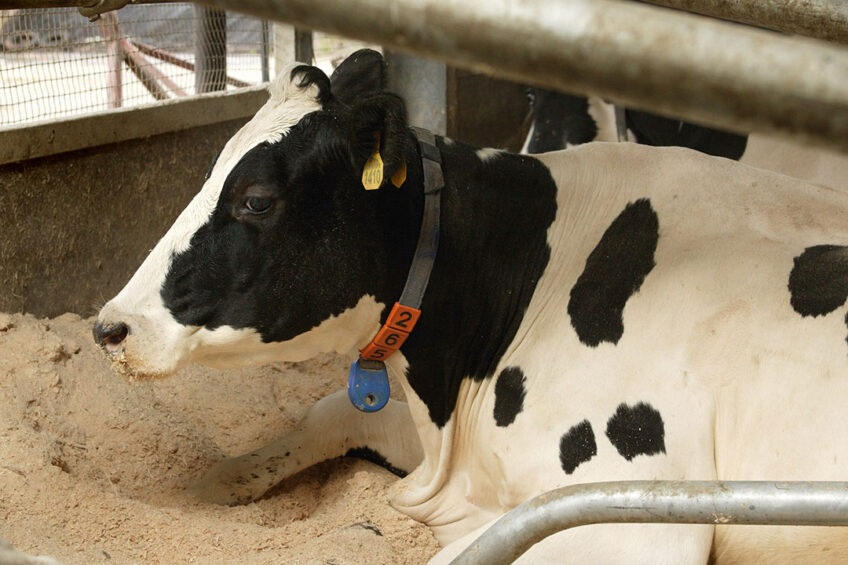
Nutrition, health, and a clean animal environment are the 3 pillars to consider jointly for guaranteeing the quality of animal production. Today, it appears that the animal environment represents an important area for progress.
 Looking at animal production under the microscope
Looking at animal production under the microscope
Let’s look at a dairy farm with the eyes of a microbiologist. The feed and the forage, the animal’s gut, the cow’s bedding, the building, and the organic waste are all complex microbial ecosystems. The balance among these ecosystems is essential. Microbial solutions are increasingly used around the farm to help manage these ecosystems. This is the case, for example, of probiotic yeast, which positively impacts the rumen microflora, leading to enhanced digestion, performance, and well-being. In the same way, silage inoculants help better control forage fermentation and preservation by orientating its microflora.

Animal bedding and manure, or slurry – and also the soiled floor surfaces – harbour important microbial populations in permanent contact with the animals. Optimising the balance of these microbial ecosystems through building and bedding management is a valuable way to maintain a safe environment for the animal while maximising the agronomic value and the logistics of the farm’s organic waste.
 The importance of housing
The importance of housing
Design and management of the housing and bedding environment are essential because each has a direct impact on animal production and welfare. According to the Five Freedoms of animal welfare, housing should be designed to allow animals access to essential needs and normal behaviour. For this, many aspects of animal housing can be controlled to reduce the risk of undesirable bacteria development, such as the temperature, air ventilation, housing design, bedding material and cleaning procedures.
On farms, the main roles of bedding/housing are to bring comfort to animals, absorb excess water and insulate the animals from the cold. However, the addition of faeces, urine – and associated intestinal microorganisms – to the bedding material alters the physicochemical parameters of the bedding/housing areas, which is therefore degraded by the microbial activity of the organic wastes (poor fermentation, gaseous emissions, etc.). In addition, some microbial growth in these conditions may be related to serious health issues such as udder mastitis, directly affecting milk quality.
Using a bedding product can help maintain all aspects of the housing that have been adapted before the animals enter the building and during their stay, including the quality of the bedding.
 Developing a microbial solution
Developing a microbial solution
Bedding products are common on the market and can have various compositions, from a simple mineral drying agent to more complex products containing biocidal compounds, aromas, essential oils, etc. A particularly interesting approach is to use specific microbial inoculants to favour positive fermentation within the bedding. To develop this kind of microbial solution that is able to orientate and control the microbial fermentation in both bedding and manure, scientists at Lallemand Animal Nutrition have selected some bacteria strains based on their synergy with each other: some specific lactic acid bacteria (LAB) and Bacillus (Figure 1).
In addition, selected lignocellulolytic enzymes were included in the formulation. Such enzymes have the ability to release certain 5- and 6-carbon sugars from the complex sugars present in their environment. These can be further metabolised by the LAB and Bacillus strains.
Figure 1 – Schematic representation of the microbial bedding inoculant mode of action.

 Mode of action
Mode of action
The inoculation of the bedding and/or manure/slurry with a high concentration of beneficial bacteria in combination with enzymes will influence their microbial ecosystem, favour the development of positive fermentation, and thus promote the development of positive microflora. How?
- The enzymes work in complete synergy with the bacteria; they release fermentable sugars from lignocellulosic materials in bedding such as straw or woodchips or from the organic waste.
- The microorganisms use these sugars as nutrients, allowing them to grow better.
The presence and the action of these specific bacteria positively redirect the fermentation within the bedding or manure. This translates into benefits at 3 levels:
- Positive bedding microbial balance for a safer housing environment;
- Building environment with less odour and lower NH3 emissions;
- Greater value and consistency of organic waste.
 On-farm benefits of a safe microbial environment
On-farm benefits of a safe microbial environment
When, in addition to good hygiene and management practices, a bedding product containing the enzymes and bacteria combination is applied, the 3 levels of benefits have been measured in different dairy farm settings.
- Using the manure and bedding solution helps producers maintain a safe microbial environment for the cows with preserved bedding quality, positively impacting animal welfare and performance. For example, long-term usage helps lead to the reduction of somatic cell count in milk (Figure 2).
- Several field trials in dairy cows, goats and ewe show a consistent reduction of ammonia emissions (Figure 3).
- Consequently, the farm organic wastes show improved quality. The solid manure becomes a better soil enrichment product since its dry matter and nutrient fixation are improved. Total nitrogen quantity is higher, and there is a higher organic nitrogen proportion than in the control group. Thus, more nitrogen is available to feed plants for a longer period.
Slurry can also be positively influenced by microbial inoculation on slatted floors or on a concrete area. The resulting slurry is more fluid (less crusting) and has higher nitrogen retention. The improved consistency of both manure and slurry has a positive consequence on organic waste management at farm level.
Figure 2 – Monitoring of somatic cell count on a single dairy farm. Comparison between year 1 as control and year 2 with the use of the microbial bedding product. Stall system with chopped straw as bedding material and weekly inoculation of beneficial bacteria and enzymes solution (Lallemand Animal Nutrition internal data. 2017. Commercial farm, France).

Figure 3 – Monitoring of ammonia level on day of cleaning in a single dairy goat building with 1 control pen (grey) and 2 inoculated pens (blue) (Lallemand Animal Nutrition internal data. 2017. Commercial farm, USA).

Conclusion
Microorganisms are everywhere. The microbial environment of dairy cows – from bedding material to manure and slurry – is key to good farm management, both in terms of animal welfare and the improved value of farm waste. It is an aspect that is often overlooked. Applying a solution combining a specific LAB, Bacillus, and enzymes to bedding and manure has been shown to help influence their microbial ecosystems, favouring positive fermentation. This new approach to farm hygiene results in benefit at 3 levels: maintenance of bedding quality, better building environments with less ammonia and odour emissions and enhanced value of the organic waste.
Author: Julia Plateau-Gonthier, product manager Animal Environment Lallemand Animal Nutrition



